Personal Page for Karl Reisman
anthropologist, folklorist, reader of Finnegans Wake
karl_reisman@post.harvard.edu
(underlined items are active links)
(IN CONSTRUCTION)
[also see Sub-Page: Articles and Papers]
Writing
“Contrapuntal Conversations in a West Indian Village” in Explorations in the Ethnography of Speaking ed. Joel Sherzer and David Bauman, Cambridge U.P. 1971
“Cultural and Linguistic Ambiguity in a West Indian Village” in Afro-American Anthropology,
ed John Szwed and Norman Whitten (Free Press 1970)
(also “research note” summary – Cultural and Linguistic Ambiguity – in Dell Hymes (ed.) Pidgnization and Creolization of Languages (Cambridge UP 1971)
Notes on Deference in a Sama (Nigeria) Ritual
“Jimmy, my old brown freer” (588.13) talk to the International James Joyce Society, Provincetown, Mass. 1980
“Whagta Kriowday!” Creoles in Finnegans Wake draft 1981
“Darktongues“: Fulfulde and Hausa in Finnegans Wake” – in jml Journal of Modern Literature Winter 2008
“Soullfriede“: W.E.B. DuBois and Marcus Mosiah Garvey in Finnegans Wake
At Flashpoint Mag there is a current issue on Finnegans Wake with my article “‘In the muddle is the soundance’: another introduction to reading Finnegans Wake“.

my sister Jane in Nova Scotia – watercolor by Neil Jampolis
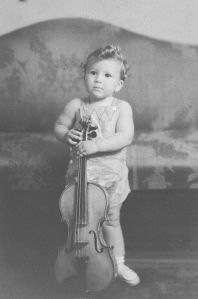
Karl with fiddle
Topics ??
– long life living
– plenty of time to get to know oneself – and others?
– who likes women – or did.
– trying to understand “the other” not through universals but through poetic particulars.
– the world of words and sounds.
– lover of music – many kinds, but not bad or mechanical ‘music’.
– problems of sons of the once famous.
– involved with trying to understand existence – but my experience of human nature has shown me the pitfalls of forcing attempts to answer ultimate questions onto our judgements of proper action.
– using this blog to try to keep alive often unrecorded parts of people’s lives, including mine. Life goes faster than I do.
– So I am trying to catch up?
———————–
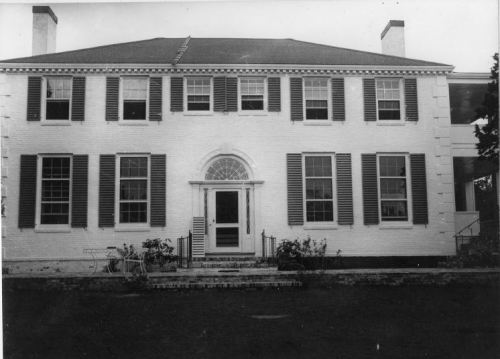
‘Cohasset’
This house – remodeled by my father out of a wooden house with porches all the way around, with fanlight door, and English grass garden at the rear with hedges and stone edging, and garage and who knows what else added, brought very little happiness it seems to me. When I was young I would run up the hill across the driveway up above a stone cliff facing – and since my father was not athletic he did not follow me up. My only true refuge.
4th-6th grade – walk the mile and a half to the train station in Cohasset, hopefully getting past Parker Ave without being set upon by the Parker Ave gang – then the train ride (maybe 10 minutes) to Hingham, out and across the tracks and up the little hill to the yellow colonial schoolhouse. That train ride still feels so vivid.
My father, with my mother as disciple, must have made a decision, in the 1920’s, which they saw as based on reason, that ethnicity (Jews self-identifying or clinging together) was a weakness and therefore one should not in any way belong to an ethnic community. To do so they saw as a lack of intelligence. So they committed themselves to a world of universal principles. But they had no interest in or use for the politics that would have made some connection between these principles and the world. (For further understanding of the context see the Leo Reisman blog page here. I as a 10 year old was in no position to question their perception. So I had no ethnic defences or any understanding of what ethnicity was all about in any real sense. And yet I was still treated as ethnically different by the very New England kids at schools I was sent to. And since I was fearful anyway I blamed myself for being singled out. I was allowed no other explanation. The nature of these exclusions was not expained to me and it took many years to understand it, let alone accept it. So I spent most of my early youth ducking.
It still shows.
——————————-
FRIENDS SEMINARY – 15th St and Rutherford Place
ROWSE WILCOX
One should make a memorial to Rowse Wilcox.
The obituary for his son Ted – a creative Harvard administrator but also like his father a magical teacher – is on the internet. But I find no record of Rowse.
Rowse was one of the most remarkable high school English teachers in a history that includes some notable high school English teachers. Almost everybody literary has serious memories of an English teacher. But Rowse was special, in ways both positive and negative.
Literature to him was real and writing a real way to see and understand the world – and he communicated that actively to a wide range of students.
The neuroses that kept him in a high school job, even if it was at the Friends School in New York City, encased him, and by the time most of his students had dealt with him for four years they had had enough of him – so there is no memorial. But there should be..
Rowse began his forming of a new 9th grade by attacking our young notion of plot. There were, he said, only 17 or 21 plots (how many – I forget). Actually he went back to the plot elements of the Finish folklorists and Stith Thompson (I doubt if he knew Propp), and translated these into the plot cards he said were used by Hollywood (-sneer-) writers, who just shuffled the deck to get a new story. What he was doing was sneaking in a notion of ‘reality’ and ‘meaning’ in experience to our sense of literature. “Reality” as something to be explored by writing. By attacking plot for not having any relation to “reality” – as he saw it -.
The negative side of this was that it also attacked our young sense of story. And thus our sense of myth. And robbed some of us of the ability to appreciate story as a way of exploration.
Then he tried to replace plot in our minds with perceptions – with “moments of realization”. Here he combined reading – Checkhov – with writing. Writing one sentence exercises he called “imaginative appeals”. One type of “imaginative appeal” was to descibe a scene in one sentence that implied a story that was not told. We had to go home and find 50 of these, pick the best ten and bring them to class in a week.
At the same time we had, probably not his choice, to read a Tale of Two Cities which he hated. So here he attacked “sentimentality”,, and introduced the notion of character by attacking Dickens’ inability to portray women with any “reality”.
While this was useful and probably true, it did make it impossible for me to read Dickens for the rest of my life.
And there were his attacks on New England and Boston ‘culture’ – he came from New London. This included his claim that in Boston the horses had books in front of their faces at lunch, instead of feedbags.
As he attacked 19th century plots, so he attacked conventional verse – and championed the free verse of the kind we could find in Louis Untermeyer’s anthology of modern poetry.
Literature for him was a way of seeing. And with it he emphasized the principle of selection – at many levels. So he introduced our young minds to the notion of the exact word – and had us write sentences in which we searched for such words. And the significant detail – in presenting a scene or a character.
Indo-European. He took the time to give us a very good picture of the discovery of the relationships of the Indo-European language family and inspired at least one student – who probably already had a bent for and interest in languages – to become Harvard’s professor of Indo-European languages – Cal Watkins.
[unedited — I once spent an afternoon with a fairly drunk Rowse who took out his collection of envelopes in which he kept the locks of hair of his favorite ninth grade girls, and took out a map to show me where he planned to go and die.
I had some of his notes on his classes with William Alonso Sherman(?) at Nebraska (was it). But I truly think that as a teacher he was a genius and deserves more memories preserved.
Perhaps Checkov, Mansfield, moments of realization, and the New Yorker are not the only keys to literature but that approach at least raises questions about experience and writing (not to mention “imaginative appeals”) that most 9th graders never come near ]
Recently I came across a piece written about Friends school in New York by Timothy Foote who was some years ahead of me – more exposed to the war, and who later became a reporter and then Senior editor of LIFE, and then of TIME and finally at the Smithsonian,
Here are some excerpts:
[Timothy Foote at http://footenotes.net/Pages/Friends.htm ]
“WHAT MADE FRIENDS WONDERFUL, aside from a benign Quakerish (but not overwhelmingly Quakerish) ethos, was a collection of teachers who have taken up permanent positions in the memory and consciousness of a good many of my classmates. This terrain (the Marines would call it the high ground) is shared in my admiring regard by no more than one or two of my Harvard professors – only I.A. Richards, really, and David Owen, who taught 19th century British history. What is more, the faculty at Friends in the late 1930s and early 1940s most remarkably and reassuringly seemed to represent viewpoints and the values that matched subjects they taught.
* * *
Rowse B. Wilcox
I think it is safe to say that Walter Hinman was a Democrat and a truly tough and pragmatic liberal, a rare combination in my experience. His exact opposite in that regard was Rowse B. Wilcox, a romantic individualist and a
conservative, the teacher whose wit, extraordinary skill at teaching writing and communicating an infectious love of literature turned a flock of Friends people (for better or for worse) into college English majors.
One of the few gifts the Great Depression gave to America was the fact that all sorts of talented folk, who really loved teaching but might otherwise have pursued more profitable careers in commerce, found there were no jobs and, figuring there was no serious money to be made anyway, went into teaching. This certainly applied to Rowse Wilcox, who had a master’s, I think, in Sanskrit, left that world to try publishing and then came to Friends because he found publishing lonely and inconsequential.
He had total mastery of his field, could give a memorable lecture on the characteristics of the Romantic Movement in contrast to 18th century neo-classicism and the Age of Reason — but would cheerfully make fun of the crotchets and weaknesses of famous writers, notably Longfellow, a favorite target, especially for the lines,
‘Lives of great men all remind us/
We can make our lives sublime/
And in parting leave behind us/
Footprints in the sands of time.’
I thought (and think) that Longfellow was wise enough, despite his desire to uplift, to know that even the most lasting legacy will soon be
blurred and washed away, but Mr. Wilcox fumed over the foolishness of using footsteps in the sands of time as an image to convey enduring achievement.
He was fond of the Romantic poets, some more than others, of course (Keats over Shelley, naturally) but would genially concede that in one way or another, they were ‘crazier than hoot owls,’ usually citing Coleridge in that connection and quoting ‘Tu whit! Tu whoo! … the crowing cock, how drowsily it crew.’ In the age of Joyce and the New Deal he was an unreconstructed Dickensian, a disciple of Robert Browning and believer in free enterprise. Having been raised poor in Stonington, CT, with a crippled mother, he borrowed the money to go to Brown from local merchants who believed in him.
Browning was his favorite. We got the amazing and subtle dramatic monologues, but he also propounded the fight poems about enduring to the very end, about challenge and response, facing life and death alike with equanimity — as in ‘I was ever a fighter, so — one fight more, The best and the last! I would hate that death bandaged my eyes, And bade me creep past.’ He could really work you into ‘Childe Roland to the Dark Tower Came,’ especially its murky but heroic close ‘And yet/ Dauntless, the slug-horn to my lips I set/ And blew …. ‘ If Browning wasn’t confronting death with courage, RBW would come up with a minor poet like John Neihardt: ‘When I go, may it be as a tune-swept fiddle string, that hears the master melody and snaps.’
To put it mildly, none of this was irony proof in the best modern manner. But his admiration for these heroic lines helped bear us along in the world of the early 1940s, which promised us an excItmg but uncertain future. It is
extraordinary how in gloom or adversity, unless you have been taught that it is
sophisticated to sneer, lines like that and the lines of hymns remembered from youth, recur in the mind — and help.
In those days you were not judged by the labels on your suitcase as we are today. Wilcox insisted that nobody should go to college for the purpose of making money afterward. He did not think that learning a lot about literature and philosophy would be much help in that direction anyway, frequently citing
captains of industry (Walter S. Gifford, then President of AT&T comes to mind) who never went to college. He knew enough about football, analytically speaking, to scout rival teams for the coaching staff at the University of Nebraska. He’d never played it himself, being a dapper and slender five-foot-six, a devastatingly good dancer, when he glided around the gym with one or other of the girls in the class — usually the prettiest — as ‘Tiny’ Nordstrom banged out one more chorus of ‘Whispering,’ on an upright piano that was herded into a corner by the nurse’s office for those occasions.
If you had any talent with words, or affection for literature, RBW could make you feel if not like a young genius at least like somebody whose efforts might some day matter. His instruction, however, was most practical. For half a century as editor, journalist, and occasional conductor of writing courses at
Yale and Stanford, I have used his relentless insistence on specific detail (‘Always be specific, never general; don’t say ‘Mr. Jones was angry that morning,’ say, ‘That morning Mr. Jones kicked the dog off the front stoop.’), his preference for inductive rather than deductive logic in expository writing.
* * *
I didn’t go to school until I was 10, but in the years since, man and boy, student, teacher and parent (of four kids variously schooled in three countries) I’ve been involved with a fair number of schools and I don’t think it entirely delusion or nostalgia that makes us look back on the Friends faculty in those years as some kind of Pedagogic Algonquin Round Table never matched since. Was it sheer chance that brought these people together? Or some subtle infusion of the Quaker spirit? Or the judgement and character of Mr. Messner and S. Archibald Smith, a headmaster who took the time to write a booklet on the proper use of ‘shall’ vs. ‘will?’ ”
————————
——————-
St Mark’s
Cloister Ball
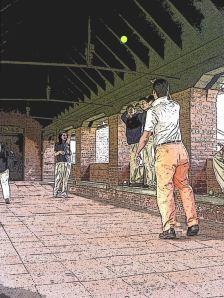
On five days notice I was told I was not returning to Friends in New York but was to be shipped off to a school in what seemed a remote part of Massachusetts with long musty yellow corridors with Brady like photographs of football teams hanging along it – and at the end a wall size chiselled wood roll call of the graduates who had died going up San Juan Hill with Teddy Roosevelt.

St Mark’s Study Hall
———————–
STAN SHEPPARD
This sudden transition to a fairly hostile environment could have been suicidally disastrous except for the care and understanding in his music classes and choir practice of J Stanley Sheppard. He was probably the only person in the school at that time who knew how to talk to adolescents as serious human beings. And he taught me how to listen and even some music.
———————–
The St Mark’s ‘literary magazine was a languishing thing, full of cliché like the school, and had not won a prize in years. Amazingly enough somewhere around 1936 W.H. Auden had spent a year there as a visiting poet, and had managed to give birth in the long run to Robert Lowell, then a student – which shows how real teaching happens. In my first year at the school Lord Weary’s Castle won the Pulitzer Prize, and so I had the experience of early knowing the wonderful poetry of Robert Lowell which stayed in my memory all my life.
Sometime in my junior (5th form) year, I was sick at my Grandmother’s in Verndale St for a couple of weeks, and as the sun streamed in the window I wrote a poem. and then another. Strange experience. The Vindex published the first – and then more. Until I was clearly a major contributor. The editorial board of the graduating year couldn’t really see their way to putting me on the masthead as editor, but they did feel they should add me to the board. To compensate they had to name co-editors – George Watson III and Tim Fowler. But I was de facto editor, and with memories of Wilcox I started to do retraining exercises with prospective contributors – and ran a tight ship. How anyone let me get away with it I will never know.
And then I ran into a rare occurrence of St Mark’s actually living up to its proclaimed ideals – or at least one person did. George Watson, who actually believed in the idea of a “Christian gentleman”, decided I deserved the credit and voluntarily stepped aside. I became co-editor and he a member of the board. This kind of Christianity did not augur well for a career in finance and George eventually became Curator of Birds at the Smithsonian.
I always remember his kindness.
I can’t at this moment put my hands on the poems that I and Lee Austin published in the Vindex – but Vladamir Nabokov in Pnin did a parody of such kinds of school “modern” verse
(His son, two classes below us, went to this school for a while and Nabokov came once and gave us a talk on Russian writers – in which he said he would not talk about Dostoevsky as it was not fit for our tender ears.
Actually both father and son had fairly perverse minds
— For reasons of biology Nabokov has at Harvard a collection of thousands (?) of drawings of the genitalia of butterflies.)
———————–
MUSIC. The greatest of all the privileges I enjoyed in my teens was the almost accidental attendance at a Boston Symphony concert in 1948 by the French violinist Ginette Neveu who was trained and emerged during the occupation. It seemed almost accidental for the orchestra as well. There was no fanfare and the orchestra was led by the assistant conductor.
But Ginette Neveu in my long considered opinion had more depth of soul and inner power than any musician of the 20th century. In the video series Art of the Violin Ida Haempl says, “That conviction that she absolutely transferred into her listeners that this is the only way and there is no other way, whatever she played.”
While others often have had to piece together an understanding of her art from fragments, some 30 seconds of video, and recordings not always made in the best of circumstances, I have this privilege of a direct and vivid memory of her art at the height of her powers. After she had picked up this toothpick of a violin and set it on her huge shoulder and played for two or three minutes I knew I was in the presence of something very special, and it has stayed with me ever since.
Here is a sample from a less than ideal recording of the Brahms concerto, which is what she played that evening in Boston: (click here).
And here is a brief excerpt from Chausson’s Poème – a recording which captures some her spirit a bit better (click here)
I should also mention that I was blessed by attending a variety of Toscanini concerts, some, thanks to my father, in Studio 8h where I was very close, and some later in Carnegie Hall, when I had learned to stand outside asking for extra tickets. That way I saw the great all Wagner concert, as well as the sad last concert where Toscanini lost his way during the Tannheuser Overture and did not reappear for applause.
Thanks to my parents I also saw the first run of Carousel with John Raitt and dances by Agnes DeMille, with 15 year old Bambi Lynn. And the first run of South Pacific, with
Ezio Pinza and Mary Martin. And much else.
But how did I come to love good music in the first place. When I was 12 I was “placed” with friends who took me Lindying at the YWCA on 17th st. And I learned to like the stride piano (“boogie woogie”) of Albert Ammons. But then Hollywood made a Chopin movie with José Iturbi doing the piano. Full of enthusiasm I stopped at Liberty records and phoned home to see if I could buy an Iturbi record (Beethoven’s 3rd piano concerto was all they had). They said no and I went home unhappy. Luckily my aunt Elsa was there. She has strong ideas and felt a connection to Horowitz from the day she drove him around in Boston. She discovered that Horowitz was giving a concert at Carnegie Hall that night and forced my parents to get me a ticket. She was emphatic that Iturbi was nothing and I had to hear Horowitz – then at the height of his amazing powers. And so my life changed.
———————–
Crushes (I wrote poems)
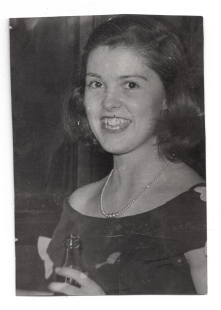
San
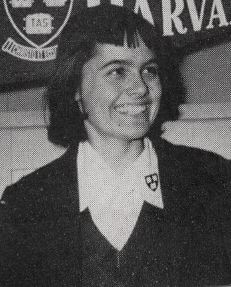
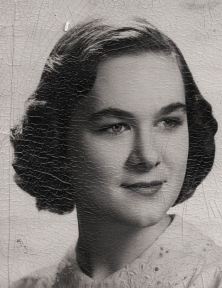
Mary
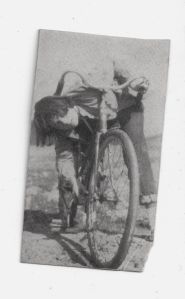
Phoebe with bycicle
——————————————————
Transition to college – summer of 1949

Lee Austin Joan Nickerson Kerry Lyne Patty Hurley Edouard Emmet to the right of his sister & brother
The summer before Harvard – on Cape Cod as in the picture above and at a summer theatre in Barnstable (Margaret White and Randy Campbell) where I was in a chorus while a 16 year old Bobby Morse played the Lord High Executioner, and turned the stage into his toy.
And a pre-visit to Harvard where I heard a yellowed Phillip Frank talk about science as “ze gombination of zhenerral brinziplz wiz ‘ard vacts”, which sounded reasonable enough, although I had no sense of the deep positivism that underlay the statement.
–
Ah College Life!
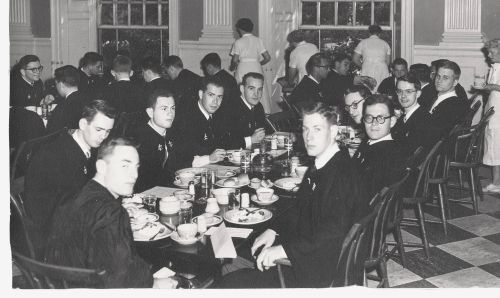
Many or most of us at some time in our lives have had a group of friends who we felt made an exceptional world that we were for a time part of. Few such groups could have been more intelligent and pleasant to be with than those sitting around the table above – in the Lowell house dining room class of 1953. Nearest is Bob Layzer, admirer of poet-doctor William Carlos Williams, John Bowman – editor – writer about Crete – and still my friend, Irving Yoskowitz (later Younger) – a penetrating intelligence famous among law students for his lecture tapes, Ivan Nabokov – one of the consistently wittiest and most intelligent people I have ever encountered, Bob Blattner – summa cum laude – lover of math and Bartok and later a mathematician at UCLA, Donald Ogden Stewart – son of the writer and stepson of Lincoln Steffens’ last wife Ella Winter, and Michael Mabry – devoted character actor, theatre man and administrator, and lover of cats.
And TODAY?
Some of these people are already dead.
The life history of any of them would be truly interesting. But in the picture and in my mind they are alive as we see them above.
But let’s try and rescue some glimpses of later times.
Ivan Nabokov, Paris, “who spends his life here handling authors as diverse as Norman Mailer and Edmond White,” and below at a conference outside Paris on V.S. Naipaul..

In Lowell house Nabokov was elegant but not always as dignified

And here is a Christmas picture of John and Francesca Bowman w Michaela, Alex and friend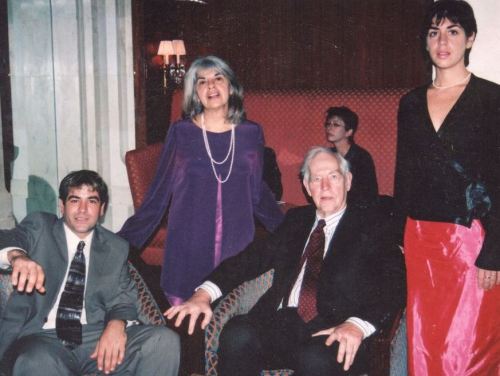

Francesca John and Martha Moffett
———————-

And then there was Irving. Even in college he had a -sometimes incongrous – flair. For a while he modeled himself on Alec Guiness, as in this photograph taken in the Lowell House courtyard:
The night we arrived at Harvard he entertained us with a complete acting out of the movie “Four Feathers”, particularly the Ralph Richardson part, and Olivier’s performance of “Once more unto the breach, Dear Friends”. as well as the Henry Vth Prologue.
He had graduated at the head of his class at Bronx High School of Science, a notoriously cutthoat place, where the grades were measured in tenths of a point, or was it hundreths. – 99.9 99.8 99.75 or something like that.
He had this belief that logic and thought could solve all problems if rightly applied. And indeed he fought to maintain that belief all his life in the face of ever increasing odds.
Years later when he decided to be elected judge in the Silk Stocking district of Manhattan, which had never had a non-Republican judge, he looked at the polling places, plotted the routes to them and put students on all four corners of the interesections that had to be crossed to get to them. Or so he later said.
Anyway he won.
On the internet right now is the testimony of a former student, discussing jury selection: “The great Irving Younger was our trial advocacy teacher at Cornell, and he’d told us to ask open-ended questions to get jurors talking.”
He is known for such things as: Irving Younger’s “Ten Commandments of Cross Examination”; “Irving Younger’s Recommended Books for the Trial Lawyer” A list including, Invitation to an Inquest : Reopening the Rosenberg Case, Counsel for the deceived; case studies in consumer fraud, and
‘How can you spot bad legal writing? Here are five signs, courtesy of Irving Younger: “the dreaded provided that” “the unnecessary herein,” …’ and so forth.
He claimed, in a television interview and also in person, that he read the complete works of Shakespeare and Dickens every year.
Here is a comparison of Irving and Joe Dimagio by Jacob A. Stein:
“The recent TV program replaying the life and times of Joe DiMaggio brought to mind Irving Younger. Younger frequently worked in to his continuing legal education (CLE) lectures references to Joltin’ Joe as the embodiment of perfection in his chosen work.
“For those who may not know of Irving Younger, by common consent he was the top banana on any CLE program. He brought the law of evidence to life with clever insights, humorous anecdotes, and inside stories. He extracted from the Federal Rules of Evidence a grand unifying theory that reconciles electromagnetism, gravity, and the speed of light.
“His hearsay lecture was unforgettable, and his lecture on the art of cross-examination was even better. Each lecture was worked and reworked, so that anything that slowed it down was trimmed off. The final product had the impact of a fine vaudeville act. As he paced the platform, he took off his jacket and rolled up his sleeves. To emphasize a point he jumped into the air and screamed the applicable rule. When he completed his four-hour, nonstop lecture, he was the fighter who had gone 15 rounds. He needed a robe thrown around him and the assistance of two handlers, one with ice water and the other with flattery.”
===============
Also see the documents sub-page
“2, Parts of A CONVERSATION WITH ROBERT B. LAYZER, MD: NEUROLOGIST POET”
And his poem there “Skeletons”
Thousands of skeletons have been
discovered at Vilnius,
still wearing the brass buttons of the Grand
Army of Napoleon,
stopped cold on the road home from Moscow
Their stiff postures remind me of my mother’s
relatives tossed in a trench by passing
Einsatz kommandos
a few hours away in Berestovitsa,
where I could find them
if I cared to visit.
Bones are everywhere – in the Rift Valley and in Rwanda,
underfoot in the catacombs,
crouching in caves at Herculaneum,
stacked like crockery in Cambodia.
I used to think I’d make a nice clean specimen myself,
like the box of bones they handed out years ago in Gross Anatomy.
We passed the bones around, rubbing the bumps and sounding the crippled Latin: capitulum, epicondyle,
a vocabulary for looking underneath the skin:
ars moriendi instead of ars vivendi,
saying goodbye to the flesh
over a long lifetime of study and discipline:
aficionados of disease,
doctors of disintegration.
And you see we are perfect at this diablerie;
for a fee (a sol or two) we will predict your death
before you can imagine it,
when your skin still flutters with pleasure,
and the blood pumps in your thighs, dear amateurs!
And after you’re dead, perhaps you’ll visit my quaint relatives in Belarus:
tell them your sad stories
and ask them to sing those sacred melodies
one hears below the ground.
In the meantime, while shreds of appetite still cling to your bones,
here’s my prescription: Burn, burn, burn
===============================
The Beat Generation
————————————–
The interview shows that Layzer had the timidity common to our generation. We thought that a society of large institutions was somehow a given and that one had to work through them or somehow not be working at all. In our last year of college the New York Times Magazine appeared with an article which even though it had several targets seemed to many to be about us. It was called
“This Is The Beat Generation” by John Clellon Holmes (The New York Times Magazine, November 16, 1952).
At which point none of us had ever heard of Kerouac or Ginsberg, and neither it seems had John Clellon Holmes.
This feeling that the world was made of large immovable instituions didn’t make us less desiring of an individualist world. And some of us such as Don Stewart and Ivan Nabokov who were born into a more embracing earlier world where individuality had more play (and hopefully the support of friendly connections) maintained some independence. Although this was not necessarily an easy or free world, and some gave up a lot to belong to it.
And a couple of us navigated uncertainly between instituions and independence, as did John Bowman who labored mightily as a freelance editor and someone like myself who for one reason or another didn’t understand belonging, and drifted as a kind of gypsy academic, carried by his training, backgound, some sacrifice, and mostly the good luck of accidental virtue ( a phrase that covers a multitude of sins).
===============================
Gilman House
Apart from the Lowell House table there were individual friends, and after several feeble attempts, a girl friend.
Ann Parsons on the Parsons’ New Hampshire farm in Alsted with the farmhouse in the background
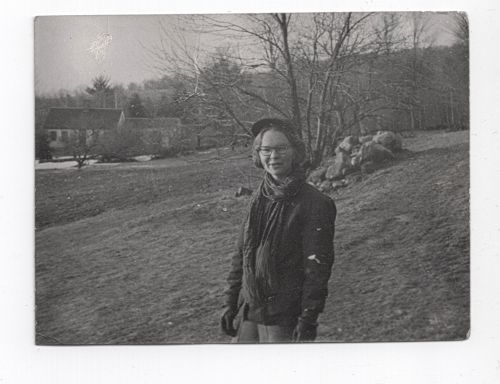
When Ann Parsons died people came from all over the world for her funeral. She had not seemed a strong person, especially to herself or her family. But in fact she had sent out vibrations to the world – of kindness, sincerity in her quest for ideas, of faith in the world, for sincere relationships with those she knew or came across.
Her family either did not expect this outpouring of respect and love – for the people who came from all over completely filled the Harvard chapel – or they did not think she deserved it. For they performed a 13 minute funeral service with no eulogy.
Ann was my first real girl friend and I did not treat her well.
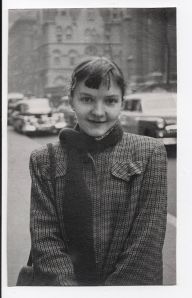
Joan Brockway

Arnie Simmel 2007
===============================
And there was John Dowd. He spoke quiety and slowly, but with great wisdom about the nature of writing and style, and extended that care to the art of driving his MG’s and Jaguar’s – he took a first at Watkins Glenn – and to the raising of his brothers and sister.
A family of great style and quality. Still a friend. I have no photo from that time. But here is a photo of John, his wife Chris, and me in Morelia, Michoacan some ten years ago.
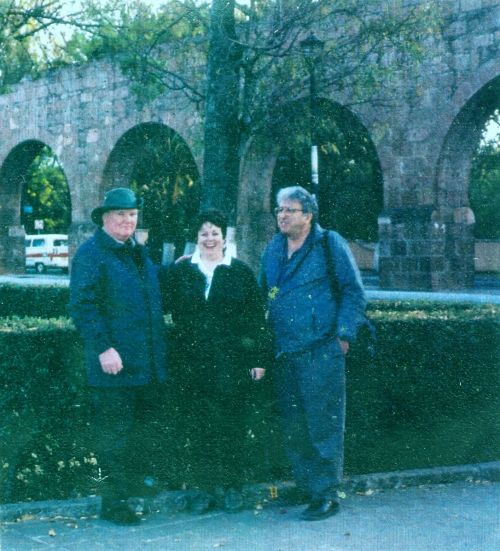
John Dowd Chris Karl in Morelia

John and Karl at John’s – 2006 (photo Patricia)
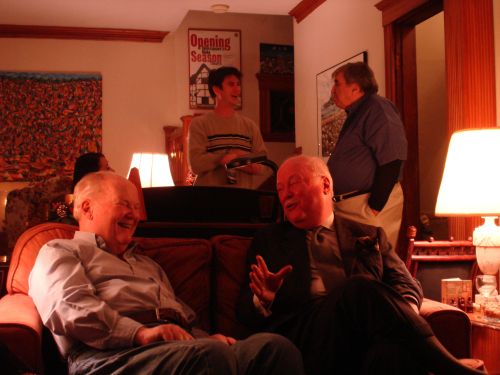
John and younger brother Michael-the most elegant man
===============================
During graduation week at Harvard, a special vision appeared. She had been invited by a boy from Bermuda, but she attached herself to Don Stewart (Himself a vision who seemed never to realize or relate to the myriad women attracted to him. Until he graduated – when he ended up in Sweden living with May Zetterling, the fiercely feminist actor and film director.) And so Joan followed the bunch of us through graduation week.
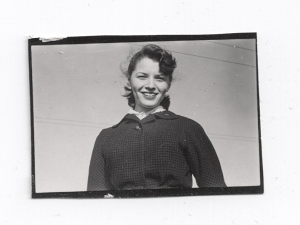
I need to explain, if I understand it, my relation to, or why I will be talking about, so many women. It is clear that somehow I have always felt that women were special – probably they carried a radiance for me which I felt was a path to “meaning” in this life.This was a completely unconscious process. it was just that I was always looking to women to provide sense and order. While there are lots of legitimate objections to such an attitude and the other attitudes it may be related to, no confining of status or role was intended by me. Not all of us are required to find our friends among our own gender. And as a result I feel I have been privileged to know some very special people with very special qualities.
___________
On a visit to Joan at Vassar she took me around to her anthropology classes – to Helen Codere’s class examining the meanings of Japanese movies, in a basement classroom with her 2 big dogs climbing in and out of the high basement window.
And to meet John Murra. Both these people were to play major parts in my life.
===============================
John Victor MURRA
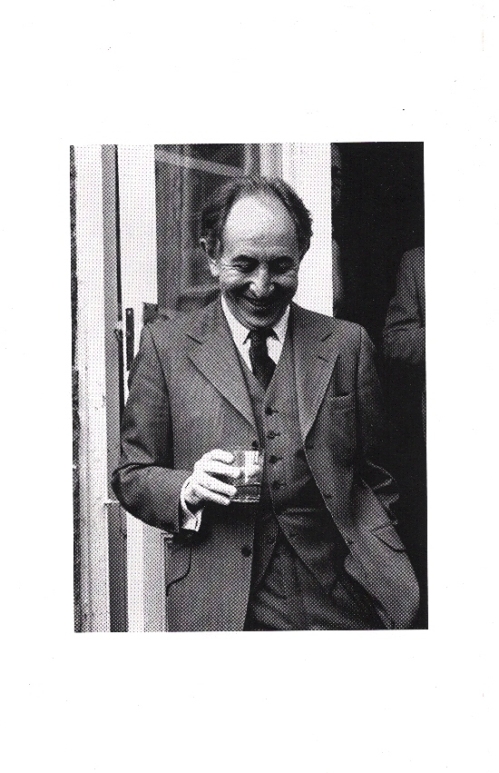
from Obituary American Society for Ethnohistory
“As he recalled later, “nothing in academic life compared with the urgencies of politics,” and that fall Murra joined the International Brigade and went to fight in the Spanish Civil War. That experience added nuance to his political stance: “Few experiences will do as well as participating in a modern civil war to explore the realities of democratic’ centralism or the strength of national and ethnic ties over class ascription.” But despite some disillusionment, Murra remained committed to progressive action. He later maintained, “I did not graduate from the University of Chicago. I graduated from the Spanish Civil War.” After the war he was interned for about six months in camps in France;
. . .
“He defended his dissertation, The Economic Organization of the Inca State, in 1955. There Murra first proposed his model of “vertical archipelagos,” a structure of exchange and access to the altitudinally separated resource zones (pisos ecologicos) of the Andes that was taken as fundamental to Andean civilizations. The Inca system moved vast amounts of goods through ritual rather than simple trade, and redistribution included products of remote ecological zones and brides trained in the royal institutions. This model has been corroborated in the Andes, where it remains one of the most powerful analyses for the economic and political basis of Andean state formation. In more general form it was also applied in many other parts of the world, and has been of particular influence in the study of pastoralist societies and precapitalist states.
“To support himself through this period he taught at several universities, including the University of Puerto Rico — during which time he also served as the field director (1948- 49) for The People of Puerto Rico project led by Julian Steward — and Vassar College, where officials defended Murra from the government’s efforts to have him deported,
“He served as President of the American Society
for Ethnohistory (1970-71), the American Ethnological Society (1972-73), and the Institute for Andean Research (1977-83), and gave the Lewis Henry Morgan Lecture in 1969, “Reciprocity and Redistribution in Andean Civilizations.” Murra’s many stints in Latin American institutions, from the 1950s through his retirement years, reflect a deep commitment to building research and educational institutions and opportunities in the region, a pattern followed by many of the Latin American students whose studies Murra supervised at Cornell. Murra was a founding member of the Instituto de Estudios Peruanos, the Asociación Peruana de Antropólogos, and the Instituto Nacional de Antropología e Historia, Ecuador. In 1987 he was awarded the Great Cross of the Order of the Sun by the government of Peru. After Franco’s death Murra was able to renew his passionate connections with Spain, returning several times for research, honorific teaching engagements, and helping fellow veterans of the Abraham Lincoln Brigade revisit the land they had fought for.”
Prepared by Frederic W. Gleach, Department of Anthropology, Cornell University, with assistance from David Block, Jane Fajans, John Henderson, David Holmberg, and Eduardo Kohn (Cornell),
Heather Lechtman (MIT), Frank Salomon (University of Wisconsin, Madison), and Gabriela Vargas- Cetina (Universidad Autónoma de Yucatán)
————————————
John Murra was finishing his Chicago thesis. He had gone through all the primary sources concerning the Inca/Inka, written during the first generation of contact, seeking to reconstruct from these sources evidence for the nature of Inca social structure. I visited his apartment in Spanish Harlem, (oh the delicious smells coming from the apartments as one climbed the stairs), where the shelves bulged with file boxes full of slips of notes on different subjects copied (by hand in those days) from his sources.,
He showed me the thesis chapters, each on a different subject, maize and potatoes, cloth, forms of service, etc., but with few transitions. Because his 15 years of work had frozen his ability to make claims that went beyond the actual data, not that he did not have claims to make, as anyone who had heard him lecture on the subject could attest, his work on the thesis had reached a kind of impasse. After we talked he asked me if I would work with him to help him over his uncertainlies with written English (mostly in his head) and as it turned out to nursemaid him into making a completed manuscript. (It later appeared as The Economic Organization of the Inca State (1956, 1980; published in Spanish in 1978, and in Italian in 1980)
So I moved to Poughkeepsie and worked with him for the months of the spring term of 1955.
This was the beginning of my real education.
————————–
And John was taking some Columbia grad students in anthropology to Martinique for “Summer Field Training” (part of a project incolving McGill and the Université de Montreal, and others) and invited me along..
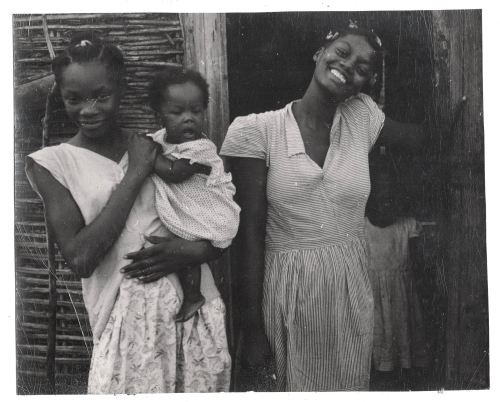
Venus and Celanie and her baby
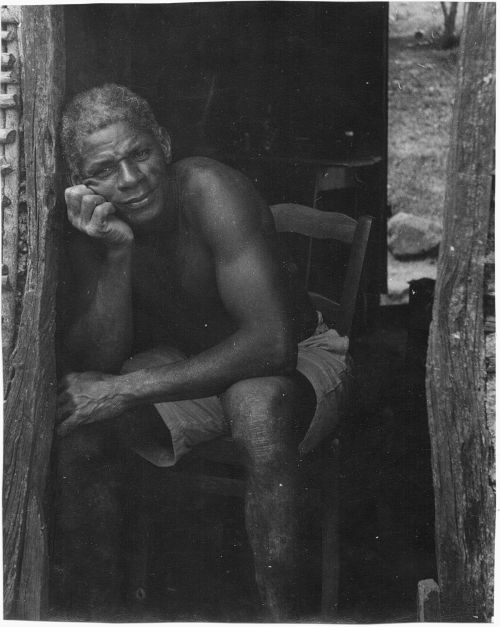
Mirande, Joseph
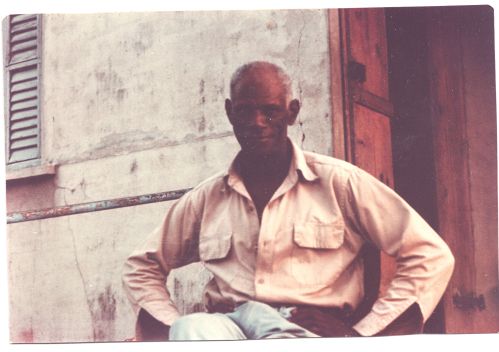
12 years later
With us were 2 people from the Université de Montreal, Guy Dubreuil and Jean Benoist (who had spent time with the Sama (Chamba) with whom I was later to spend two years of my life),.
They set an example for us in newspaper and document research.
Among other things they traced the various sugar estates back in time and found that almost all of them traced back in an unbroken line to the 17th century. So that the society and culture of Martinique inextricably intertwined Africa, slavery, and a complex connection with the estate owners and France – so complex that for decades and more France had bought the products of the estates in the form of rum, and so that that rum would not compete with brandy and wine, had dumped the rum into the Atlantic on the cross-ocean voyage.
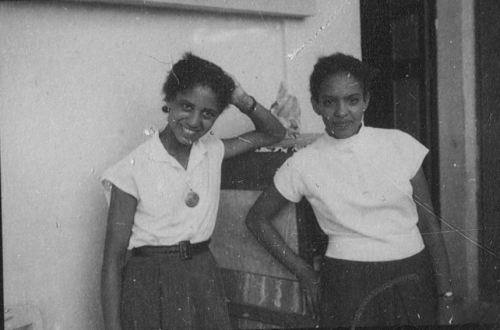
Les Soeurs Baljan (Mona Jaqueline) of Paris, in Fort de France
Our initial stay was in the hospital wing of the Lycee Schoelcher, a bit up a hill from Fort de France. There was a stage gymnastieque, a three week training for female sports teachers, in process. One night all covered themselves with sheets, carried candles, and marched along the open-air corridors chanting
Un marron et un marron
Ca fait deux marrons
Deux marrons et un marron
Ca fait trois marrons
And so on up into the high numbers. It was a beautiful sight and sound.
Eventually I went to the southwest – first to St Anne
where I stayed with the family Gemieux – where I saw an 11 year old mullato girl arrogantly boss around a 13 year old, because she was the daughter of the 13 year old’s mother’s mother, and therefore her aunt – and because she was lighter. And the 13 year old took it.
The thirteen year old’s mother was Reinette, a completely vivacious and smart person. who navigated between St Anne and the capital, Fort de France. Here is a very faint photograph of her.

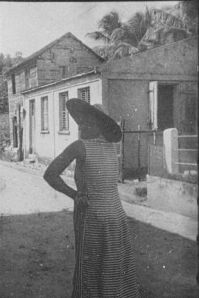
===============================
ANTIGUA
The DAVIS family.
When I went to the Caribbean, on the way to Martinique,
I met a wonderful family, who were to become – at least for me – a second family; people who showed me what a
family could be. What family values meant.
They also had two children going to Harvard and Radcliffe at the end of the summer.
 J Oliver Davis in an informal moment
J Oliver Davis in an informal moment
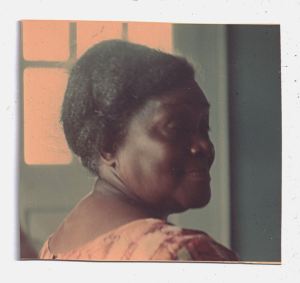
Evelyn Davis-Mrs D
—————————————-

Ermina having hair combed by Erna Brodber

N Gregson Davis Mellon Professor Duke Univ
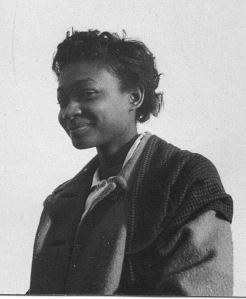
Cecile 1956

Ermina 1974
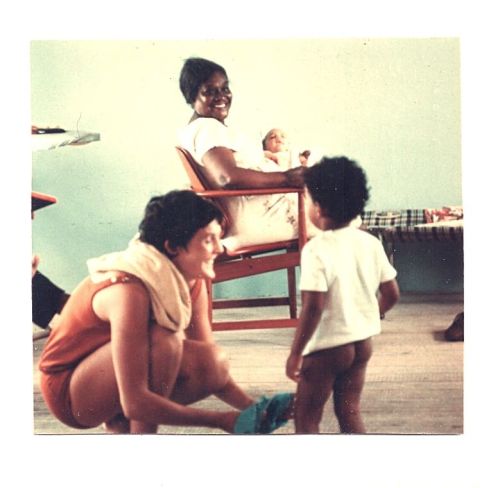
Jill Sally Evelyn
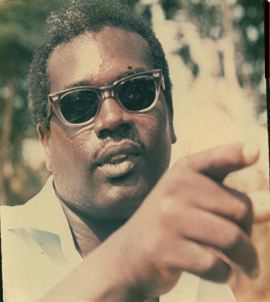
Milton Benjamin
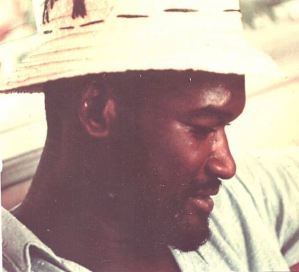
Juni
&nb
———————————————————
==============================
I arrived in Antigua for the first time just when Calypso had undergone a revivification, an expansion in scope, in dramatic scenes, primarily in the songs then of two people, Slinger Francisco – the Mighty Sparrow, and Lord Melody.
Sparrow’s songs, either then or a little bit later, are said to be the work of Reginald (‘Piggy’) Joseph who I mention because the work that the two of them did between 1955 and 1966 is one of the great creative achievements. The two major songs that were in the air when I arrived were Sparrow’s Jean and Dinah – about the condition of Jean and Dinah when the American base closed, “Yankee gone, and Sparrow take over now.” and Melody’s
“Mama look at BooBoo” famously stolen by Harry Belafonte. Listen to them here:
Jean and Dinah and Mama Look a BooBoo de
Jean and Dinah, Rosita and Clementina
Round di Kana posin’
Bet you life there’s something they sellin’
And if you catch them broken
You can get it all for nothin’
Since the Yankee Gone Is SPARROW Take Over Now
———————————————————
==============================
<
———————————————————
MIRA NAKASHIMA
When I started teaching Social Sciences 2 sections in 1958, a young freshman walked into the classroom, dressed like a totally original, simple, colorful and beautiful fashion magazine page. In addition she was charming. After the seventh week I could no longer restrain myself and improperly asked, Where DO you get your clothes.
She looked at me and in her matter of fact
happy voice said, Oh, Lord and Taylor.l
Those are the only words we have ever exchanged. But I was not wrong.
Her father, George Nakashima, was one of the great moral and artistic geniuses of this country – and for the last 35 years she has taken over his work and artistic tradition.
I have visited his Benedictine chapel near
Georgia Okeefe’s house in Abiquiu New Mexico, and followed the work.
You can see it all, with their ideas and words and the wood, at
http://www.nakashimawoodworker.com/

Benedictine Monastery of Christ in the Desert – George Nakashima

George and Mira Nakashima 1982
==============================================
DENMARK
After college I hung around Harvard Square for a season of uncertainty. Then my family to rescue me from the army sent me to Columbia graduate school for a year. Unnecessary as the next year when I went up for a physical I was rejected — for hay fever! After the summer in Martinique I started the graduate program in social anthropology at Harvard in 1955, which was the last year my family supported me, except for the $900 trip to Europe in 1957. From my second year on I had teaching fellowships, most notably in Samuel Beer’s Social Sciences 2, a course which has become an institution with anniversary publications and meetings. Among the other teaching fellows in my years was an unassuming German student named Jurgen Habermas, (who later – if you didn’t know – became one of the major figures in German and European social thought).
So in 1957 I finally got to go to Europe which my family and friends had implanted in me as the goal to be wished for. They had France in mind, particularly memories of high life in the pre-war France of 1937.
The shabby France of cheap hotels in 1957 was not what they would have had in mind, but I found it romantic enough and miss it now. But I was disappointed in the cafés, so crowded and close to the street.
But I had glanced at a book called Sweden, the Middle Way, and I wanted to look at Scandinavia. Also I had been talking to a Danish man who was janitor at one of the Harvard buildings and who had painted pictures for me of the life of artists in Copenhagen, cafés such as Tokanten – the two corner, and the student club. So I started hitching north.
After drinking cold Moselle on the Luxemburg German border and stops in Frankfurt to visit the future wife of a friend of mine and a night in Osnabruk where my ride was a major citizen so that I spent the evening hobnobbing with the mayor and town notables, and after a couple of days in Hamburg, I made it to Trevemunde where I caught the overnight boat to Copenhagen.
I slept on the upper deck. When I got off the boat at 7 in the morning there was this immense fountain spewing up more water than I had ever seen, and these powerful sculptures, and the sun was shining in the clear air, and I knew I had come to the right place. A milk truck driver drove me to a laundry next to the Central Station. And inside the station there was a rooming office and they booked me a room just over the bridge in Amager for a dollar a night.
(In those days Amager was a totally quiet out of it place, with not a trace of Bohemia or its leftovers.)
I had been told to make sure my passport said “student” on it, and for some strange reason this entitled me, that night, to go into the students’ club, an immense building on the town hall square (no longer a students’ club, real estate values having caught up with the good life). Being Denmark, beer was sold, and people sat around tables on the second floor and tried to communicate. I asked if anyone wanted to volunteer to show me around Copenhagen the next day
(Saturday), and a redheaded girl (!) at the end of the table said she would like to (Americans were popular in those days-still liberators).
And so I met Aase Witt. And she took me around the harbor in a boat, and to my favorite park in the world, FrederiksbergHave, and to hear Oda at the Café Intime on Frederiksberg Allee.
Oda was then in her fifties. She played into her 80’s, at which time the bar had converted into a noisy men’s gay bar. And became a figure of nostalgia, as in these quotes from an article called “Timeless Copenhagen” by Terje Raa:
“No sooner are you in Copenhagen, Denmark’s capital city, then its name suddenly changes to Frederiksberg; a municipality within and encircled by Copenhagen. The posh (then it was more middle than posh) Frederiksberg boasts a City Hall of its own, near which there is a place where time has stood still – Café Intime. (It did not feel so quaint or smoky and noisy in 1957.)
Calling Frederiksberg Copenhagen, that’s okay, but calling Intime a café, is a bit pretentious. (It used to have more tables in its small space and serve good food.) It’s a bar, discreetly placed in Allégade 25 behind a narrow park. The assembly rooms next door are not part of it, but the whole thing apparently started out as the Wine Restaurant Intime, its first license dating back to 1922. The unsteady sign outside is of younger date, revealing that Intime stays open from 16 to 02.
The colored glass of the arched windows keeps the daylight out, but fails to keep the piano music inside though, in the only true piano bar around. (Oda used to have a grand piano in the middle with stools around it – but by the time Terje Raa came to it it just had an upright.) Newcomers enter with a definite feeling of deja-vu, not quite aware that they are traveling backwards in time to a prenatal condition. Deep-red walls, green-black ceiling, cozy nooks and crannies, knick-knacks on every shelf, enveloped in a patina of tobacco, soft lighting and nostalgic tunes, the old-fashioned place engulfs you – like a womb. . . .
The elder lady on the wall is Oda who played the piano ages ago – tunes of joy and sentimentality, generated by gnarled old fingers. Her dresses were like historical theater costumes, their heaviness kept her warm. In the wise eyes of Oda, there was a sense of romance making her an excellent matchmaker. She had her favorites and each had his own special song played, a seldom honor among the ladies. Late in life, in her 80s, Oda became a gramophone star and can still be heard on the radio decades after her death, reciting with a smile in her voice.”

Oda
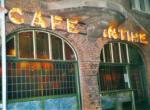
Café Intime -outside
The article says,”making her an excellent matchmaker”. So I was not the only one. Oda was a magnificent musician and her phrasing and rhythm and playing of songs of the 1920’s and 30’s held me captivated night after night as I returned, with Aase or alone. Also there was her own song, Jeg elsker dig fordi du ikke blaffe om giftemaal og ring og den slags ting, part of which is translated by Terje Raa as “I love you because your nature flutters
toward me like a candle in the draught
I love you for when I believe I’ve got you then the candle goes out
and you are gone”
but which opens in the Danish above
as ‘I love you because you don’t talk nonsense about marriage and rings and that sort of thing.’
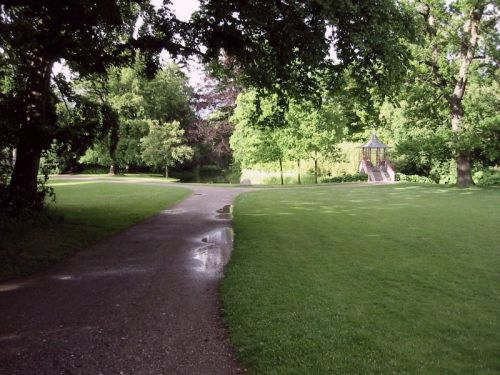
Frederiksberg Have

Frederiksberg Have 2
Anyway we went out again and on the terrace of the Chinese Tower in Tivoli on our third date I proposed to her. ME! Anyway she said, “Don’t be ridiculous” and I said “I have to go see Stockholm tomorrow and would see her when I came back.”
—————————–
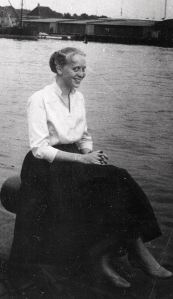
Aase Copenhagen 1957

Karl Copenhagen 1957

Fru Witt (Ebba) Karl Aase Picnic
Torben

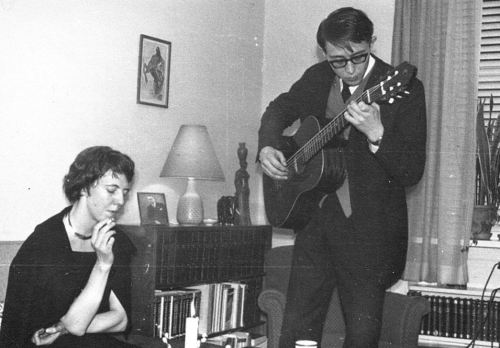
Torben with guitar, Inge smoking

Ebba Borge og Ella Aase Torben ved kaffebord

Ebba, hersister and husband, Aase, Torben
———————————————————
———————————————————
Aase died in early February (2009).
Luckily when I heard she was ill I sent her a letter saying what she had meant to me – and we talked on the phone. We stared at each other in a Poughkeepsie farmhouse some 45 years ago and realized we could not go on, but it still feels like something has gone out of the world that was supposed to be there, Damn it. Part of what I said to her was:
“So I want to say a couple of things about how important you have been in my life. First you were the first person who showed me what a civilized life could be. A way of living which while I could not achieve it has been of lifelong importance to me. (Part of that inspiration can be seen in the fact that I sent my stepson to Scandinavia, where he has been ever since.)
Second, you freed me from my parents and showed me, when we saw them after being away for 2 years, that I didn’t have to listen to nonsense.
In general you taught me a straightforward point of vew that has been with me ever since.”

Copenhagen apartments 1957
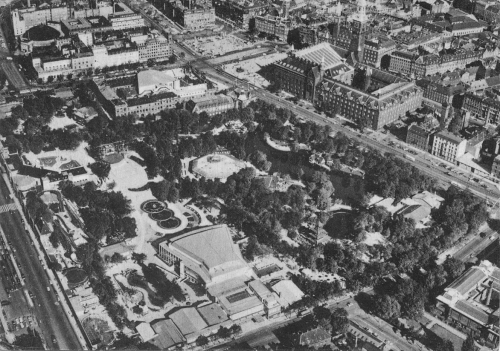
Tivoli by air
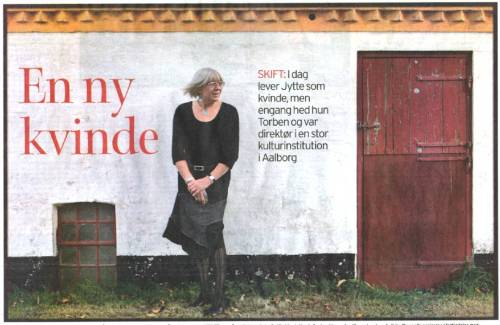
Jytte Witt
———————————————
Caribbean-
In 1960, after spending a year teaching in Mayaguez Puerto Rico, Aase and I went to Antigua for a year in which we sometimes lived together and sometimes not. My base was the house in John Hughes village shown below.
To pick up the Calypso theme – by this time Sparrow was singing some of his greatest compositions – including the great West Indian dramatic narrative Ten to One is Murder with its wonderful line “I back back ’til I nearly fall in the gutter.”
A relatively early performance of this (not completely fresh – neither is this recording – can currently be seen on Youtube
On the same theme of street fighting and self-defense,
there was also a wonderfully exuberant song at this
time called Royal Jail – Sparrow will defend himself to the point of recklessness and prison:
I done tell my friends and my family, not to worry
Any one of THEM interfere with me, take it easy.
Don’t worry to beg the jury
Save the lawyer fee
And if you have any mail
Send it to me at the Royal Jail.
A brief fragment can be heard here (there is a considerable period of
silence before the music suddenly starts)
——————————————–
Caribbean-

My house in John Hughes
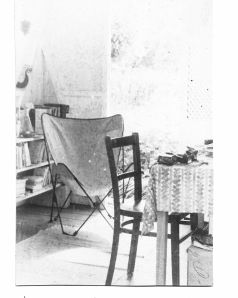
interior 1

St John’s 1960 (postcard)
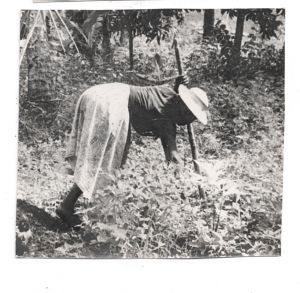
Myuwell in her garden
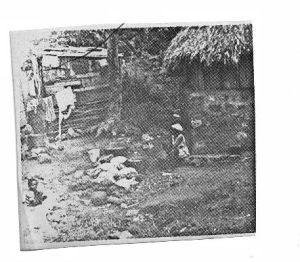
Myuwell’s yard

Myuwell’s house
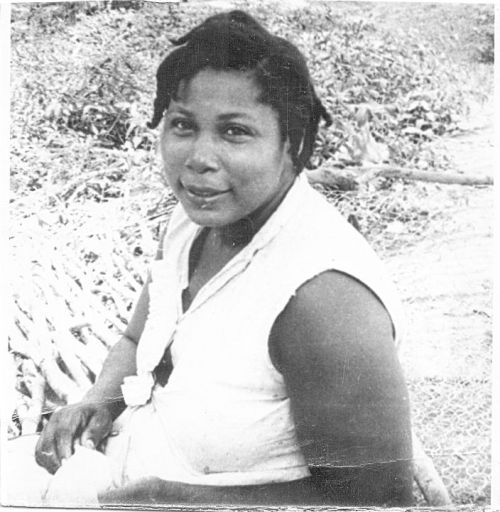
Titin
———————————————————
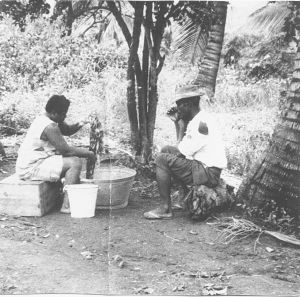
Titin and Ismael
———————————————————
========================
(This will take a while to construct
so don’t jump to any conclusions)
JANINE FREYENS
Fred’s screen
———————-

Frederic Courtois – burned gold screen
——————————————————–
Janine Freyens had more character – discipline, depth, responsibility, compassion – than any person I have ever known. And she knew how to do things, a talent increasingly rare in this world. She did the thing to hand rather than just dreaming about doing things. So if her first husband needed a social world in which to exercise and make known his mathematical genius, she became the hostess to a generation of mathematicians, at Chicago, Ithaca, Priinceton, and Boston. If her second husband decided to do fieldwork in remote areas of Africa she became a wonder at organizing and maintaining a world in those conditions. And everywhere she went she created relationships – In Ganye she created a network of people, relating informants, officials, servants, teachers, priests, missionaries, ‘chiefs’– anyone who came within our view. While she never wanted to do the American thing of going among strangers and “making friends”, anyone who legitimately came within her view – neighbors, colleagues, parents of students, relatives, etc. would be included and made part of her world. And if you were part of her world she believed in your individuality and your importance.
And if she decided she could do something she did it with honesty and style and energy and a level of skill and perfection which she felt she owed to the activity.
She combined her father’s flair and her mother’s solid grounding.
A note on Nuits St Georges
Ah Cote d’Or! We used to go to the wine fair in Bruxelles. And there was a Cote d’Or booth. And not only did we taste, but in those days the price made sense and we bought a lot of bottles. And then later we drove down the road and not only visited Montrachet along with a bunch of Alsatian merchants – so we got the full treatment, and Janine ended up in a half-hour conversation with the owner, but also visited a wonderful cellar in Nuit St Georges and drank happy.

———————————————————–

Wedding, NY 1964 Bob&Elsa Lillian
———————————————————–

——————————————————

Tamar and Gregor at the World’s Fair 1964
——————————————————
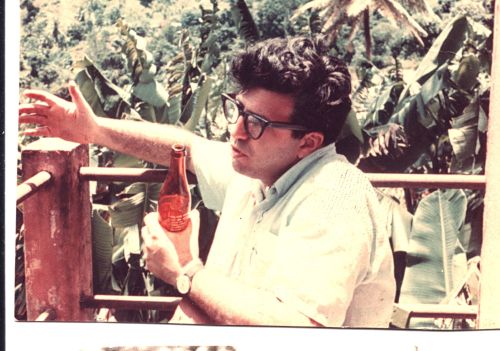
Karl in Martinique on way to Trinidad with Janine 1966
Sparrows most popular Calypso that year was “Obeah Wedding” also known as Melda (here in the original version)
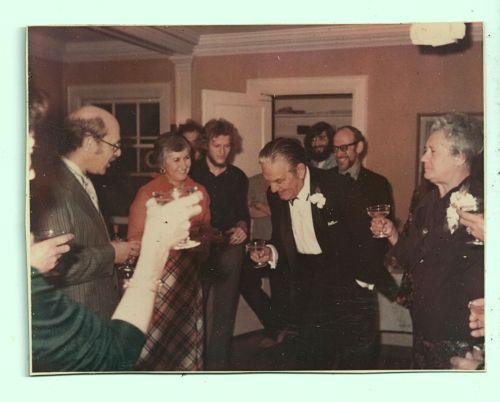
PaTony & Mouty 50th anniversary visit Morrie&Dottie, Larry, children
——————————————————

Janine Karl Ermina 1974
—————————————————————————————–
GREGOR

Gregor and Josefin in California

Gregor’s hands
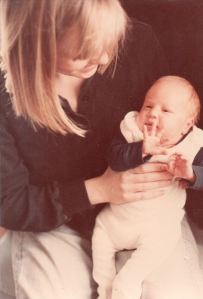
Josefin w Joel when very young

Josefin w computer
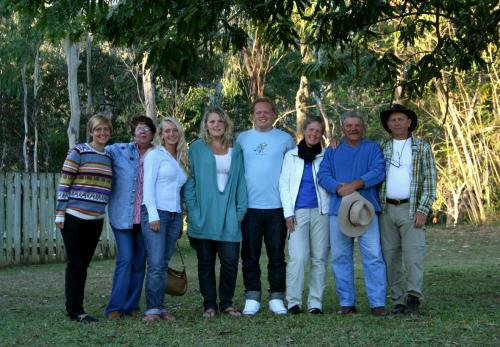
Sara Tamar Alma Joel’s girl Joel Josefin Tamar’s Mand Gregor-Australia
—————————————————————————————–
========================
CALIFORNIA
The Californians
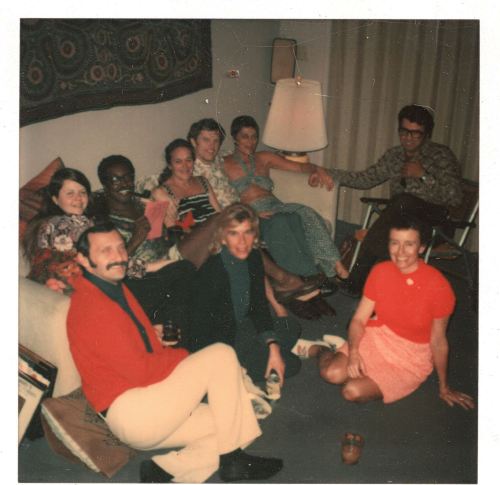
RUTH Matt Barbara Janine Karl
Ruth McConnell
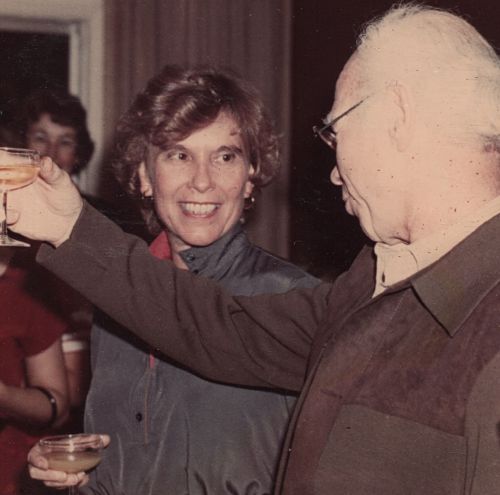
Ruth and friend
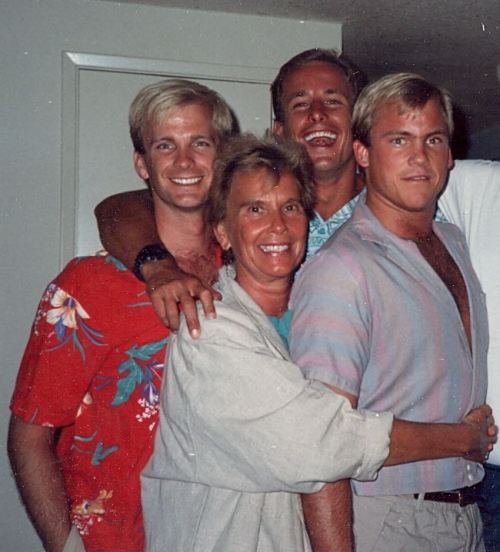
Dr. Ruth McConnell and her boys

Our backyard
I am not yet ready to discuss our breakup in 1978. Or my year living in south Silverlake. When one day Bob Thompson called me from New Haven and asked if I wanted to come to Yale as a fellow at
Timothy Dwight College, I was ready. =============================
A former Benedictine novice Elizabeth and I met on a train in Norway – and just kept on traveling. She was one of three Los Angeles schoolteachers who in those prosperous days spent their summers traveling and sometimes partying in Europe. She could read all the stained glass windows in the cathedrals and we even traveled to a monastery on the Loire which had St. Benedict’s remains. Her father had been a union organizer in Detroit.
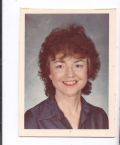
Elizabeth
=============================================
Leaving CALIFORNIA
YALE
After Yale I went back to California and packed up my things. I took the Chevy 12 cylinder wagon that Gregor had sold me, packed it full, and headed east to Sally’s house in Chevy Chase. We were very briefly acquainted and she had invited me to stay with her for awhile.
Sally on the telephone had the most beautiful voice and manner – creating personal relationships whenever she talked.
She worked for Government cultural agencies, and was perfect for her job.
She was also my first experience of Yuppie culture – the latest pots and pans, the latest cookbooks, wonderful drinks, and a correct way to do everything. This side of her personality shows perfectly in a picture taken with an odd bear and some swans.

Sally with bear and swans
Sally turned out to be a depressive; communication was difficult. And so I headed for Florida. But I did invite her down to stay at my uncle’s for a couple of weeks – which is where I think this picture was taken:

Sally
=============================================
FLORIDA

Karl and Martha in Venice
===============================

Martha and Karl – Antibes
Martha – nice, gentle, kind, seeing, stronger than she seems, and with a sharp very funny, sometimes nasty, sense of humor
(No doubt she deserves better.)
Watch out!
=============================
Florida the 1990’s
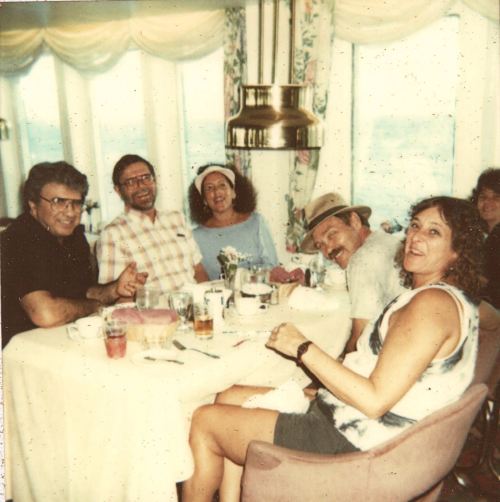
Denis Rita Karl David Lydia
Karl’s Birthday Card:
Lydia, David, Rita, Mark, Cathy,
captions by Martha

John Murra’s 80th birthday – Judy Willis found this lovely home on the lake – north of Ithaca where we spent the day. The whole event was organized by Teddy Lechtman and Judy and brought together Murra’s good friends from a lifetime. Here is a photograph of a moment of that day with
Judy (seated), Elizabeth “Murra” and John.
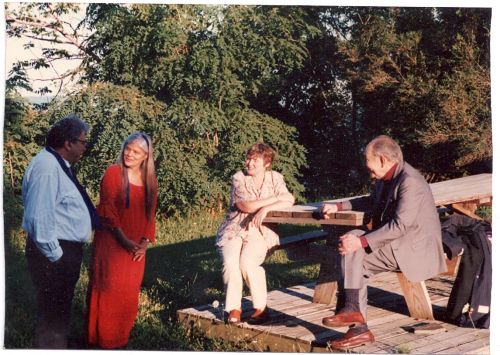
=============================
HELEN CODERE
I taught a seminar with Helen for several years at Brandeis – and we were close and she exhibited a generosity I have rarely experienced in this world. Her book on Rwanda and its interviews with Tutsi, Hutu, and Twa: The biography of an African society: Rwanda 1900-1960 —based on forty-eight Rwandan autobiographies (Annalen : Reeks in-8o : Menselijke Wetenschappen … voor Midden-Afrika, Tervuren ; no. 79 by Helen Codere 1973)
and her article “Power in Rwanda” pointed to the harsh conflicts in Rwandan society – in contrast to the ‘harmonious’ picture of functional hierarchy prevalent in the anthropological literature — and should have been an indicator of the explosion to come a generation later. As she put it – the main problems of Rwanda could be summed up in the word “Contempt” – that of the Tutsi for the Hutu. That many non powerful Tutsi were killed in the explosion of Hutu resentment when their first President was shot from the air by the Tutsi army, is one of the sad events of the world. But she made it clear that the Tutsi had planted the seeds of that explosion — and it was their armies rebelling against the very idea of a Hutu president who had the arrogance to shoot down his plane.
Karl Reisman
The Boston Globe
Helen Codere, 91; anthropologist studied Rwanda, Pacific Northwest
HELEN CODERE HELEN CODERE
By Gloria Negri Globe Staff / July 5, 2009

Helen Frances Codere showed her independent spirit and interest in how others live while growing up in St. Paul. A teenager who had read Henry David Thoreau’s “Walden; or, Life in the Woods,’’ she told her father she would like to live alone in a cabin in their woods, as Thoreau had done at Walden Pond.
Charles Codere knew his daughter was strong-willed and acquiesced, though the cabin was without plumbing, her nephew, Richard H. Fleming of Chicago, recalled. “There was no question that Aunt Helen had already fallen in love with anthropology,’’ he said.
She, Fleming said, became a cultural anthropologist at a time “when there were not too many women in the field. Aunt Helen was a trailblazer.’’
Dr. Codere, a professor of anthropology at Brandeis University and then dean of Brandeis’s Graduate School of Arts and Sciences, died of congestive heart failure June 5 at Emerson Hospital in Concord.
She was 91 and lived in Concord.
Dr. Codere’s books and notes of her pioneering field trips in the 1950s and 1960s, first among the Kwakiutl societies of the Pacific Northwest, in British Columbia, and then among the Hutu, Tutsi, and Twa societies in Rwanda, remain gems among anthropological literature and will soon be preserved in several anthropological libraries and museums.
Her academic years spanned five decades and included professorships at Vassar College, the University of British Columbia, Northwestern University, Bennington College, and the University of Pennsylvania. Her many awards and fellowships included those from the Social Science Research Council and the Guggenheim Foundation.
Outstanding among her achievements, said Peter Macnair, retired curator of the Royal British Columbia Museum, was her 1966 editing of “Kwakiutl Ethnography,’’ by the late Franz Boas, her mentor whose work among the Kwakiutl she continued. Boas, who died in 1942, had chosen her as his literary executor for his Kwakiutl manuscripts.
“She put together his intended manuscript. That was her huge contribution,’’ Macnair said.
In 1950, Dr. Codere’s book, “Fighting with Property: A study of Kwakiutl Potlatching and Warfare, 1792-1930,’’ was published. In it, she explained the intricacies of the tribe’s potlatching, a system of the redistribution of material possessions. “The party able to give away most of their wealth was clearly the richest of the tribe.’’ Fleming said.
Dr. Codere’s field trips with the Kwakiutl were in 1951 and in 1954-1955, when she lived most the time with a Kwakiutl family.
Dr. Codere did groundbreaking research, said Benson Saler of Concord, a retired Brandeis anthropology professor. “She became a person of some note, particularly for her scholarly field work among the Kwakiutl.’’
Saler recalled her telling him how she lugged a huge amount of oatmeal with her for fear it would be unavailable during her field trips with the tribe. “Field trips in those days were much rougher than they are today,’’ he said. “No four-wheel drives. But one of Helen’s hallmarks was to experience a culture firsthand. You go there and you live with them.’’
Page 2 of 2 —
Dr. Codere wrote of her Rwanda field study in 1959-1960 in the book “Women in the Field,’’ edited by Peggy Golde. “Most of the year’s field work revolved around the opportunities and problems of the Rwanda political situation,’’ Dr. Codere wrote.
Dr. Codere, who never married, pointed out that in the field, “Single women lack some of the freedom and mobility of single men; they are objects of even greater curiosity and scrutiny in a world in which going two by two is projected.’’
“The general purpose of the Rwanda field research,’’ she wrote, “was to study change.’’ She was challenged to communicate in two languages, Kinyarwanda and French. “I had come to study social and cultural change,’’ she wrote, “and there was too damned much of it. It was too vast, too widespread, too fast, too violent, too much of a mass phenomenon for me or any other anthropologist to deal with.’’
It was a troubling time for Rwanda. “Before 1959,’’ Dr. Codere wrote, “there had been virtually no foreshadowing of the trouble that began in July following the unexpected death of the [King] Mwami Mutara III,’’ and the resulting conflict between the Tutsi and Hutu.
Her nephew recalled that while in Rwanda she was invited to meet a tribal chief who gave her a gift. “She didn’t know how to reciprocate, so she gave him the five silver dollars her father had given her.’’
Even in her academic life, after retirement in 1982, and her 20 years as a volunteer in the Concord Free Public Library, Dr. Codere never lost the look of a pioneer, friends said.
She favored khaki-type trousers and casual shirts. Her white hair was short. She was 5-foot-4 and wore glasses. “Helen was a renaissance woman,’’ said Patty Bareford, a friend from Concord. “She was extremely accurate with words, had a great sense of humor, a compelling laugh, and was still fiercely independent. She was adamant about reading the paper every day.’’
In her L.L. Bean shoes and Pendleton slacks and jacket, Fleming said, “Helen was always ready to go on a hike.’’
She was born in Winnipeg, Manitoba,and came to the United States with her family in 1919. Her father was a businessman.
She graduated summa cum laude in 1939 from the University of Minnesota and received her doctorate from Columbia University in 1950.
[[Somehow this obituary manages to omit Helen’s many years teaching at Vassar – or her relationship for life – ended by Marion’s untimely death – with Vassar’s Dean Marion Tait. The experience of Vassar was fundamental to her life. And just as Helen retired and they had plans to travel and really enjoy their life together, Marion died. —–Marion Tait, Ex-Vassar Dean And Classicist, Is Dead at 70 (The New York Times); Obituary October 2, 1982, Saturday
Marion Tait, dean of Vassar College from 1948 to 1965, died Thursday at her home in Concord, Mass., after a long illness. She was 70 years old. …
The lovely old home in Concord that Helen and Marion shared – and their farm in Vermont. KR]]
After teaching at Bennington College in Vermont in 1963 and 1964, Dr. Codere moved to Massachusetts and taught at Brandeis, where she later served as dean from 1975 until she left the university in 1977.
She continued her interest in living close to and cultivating nature in her vacation place in Vermont, Saler said.
Saler and his family visited her there and found that her girlhood interest in living like Thoreau had not waned. “I remember,’’ he said, “there was no running water but an interesting system of rain barrels with gutters along the two cabins.’’
“A lifelong conservationist,’’ according to her nephew, Dr. Codere donated her 260 acres in Andover, Vt., and Chester, Vt., to the Vermont Land Trust.
Dr. Codere never lost her sense of humor, Bareford said. When she asked Bareford to pick out a plot for her at Concord’s Sleepy Hollow Cemetery, Bareford called her with two options, one less expensive than the other.
“Buy the expensive one,’’ she told her. “You only get buried once.’’
In addition to her nephew, Dr. Codere leaves another nephew, a niece, five great-nieces and one great-nephew.
Memorial services will take place in Concord at an as yet undesignated location on Sept. 10, which would have been Dr. Codere’s 92d birthday.
© Copyright 2009 Globe Newspaper Company.
——————–
Looking back at life in increasingly very old age – at culture from the time of my mother – 1900 – to 2012, at what I’ve been told, at the music, the art, the film, records, etc., as well as reading from the past, – the world that James Joyce encompassed and understood is so immensely larger and deeper than any other cultural world I have encountered, and his level of understanding of it so beyond normal human capacity, that as Becket said, he is the exception. Just when you want to send the world to the devil, there he is.
TWITTTERS MARCH to OCTOBER 2013 see https://fadograph.wordpress.com/2013/10/14/twitter-kr-march-october-2013/
All my life I have gone on journeys. When I said goodbye at home, it was always with the hope of something new, and finding strangers who would become friends. To say “goodbye” without su ch hope is too bleak to be possible.
Yet the Buddha tells us to say Goodbye.
When I see the lizard dry outside my door I do not think he is on a journey.
SANDSTONE – In Memoriam
John Williamson, Co-Founder of the Sandstone Retreat, Dies at 80

A trampoline on the property.
By WILLIAM YARDLEY
Published: May 4, 2013
John and Barbara Williamson always insisted that Sandstone Retreat was about more than sex. By all means, help yourselves to each other, they would say. But the goal was larger than spouse-swapping or fulfilling forbidden lust.
Connect With Us on Twitter
Follow @NYTNational for breaking news and headlines.
Photographs, via Sandstone Foundation
John and Barbara Williamson founded Sandstone Retreat on 15 acres near Los Angeles. The goal, they said, was to understand society, and set it free.
They said that their 15 unconventionally inhabited acres in the Topanga Canyon area near Los Angeles, formally known as the Sandstone Foundation for Community Systems Research, was about understanding society — and setting it free.
“We believe in the sexual self as being at the core of organized social behavior,” Mr. Williamson told The Los Angeles Times in 1972, three years after Sandstone was formed. “When sexuality is distorted, it leads to a distortion of the basic self.”
Mr. Williamson, whose death on March 24 in Reno, Nev., was not widely reported, had spent most of the last two decades running a nonprofit sanctuary for tigers and other big cats rescued from neglect or abandonment. Mr. Williamson was 80, more than four decades removed from his bold moment at the forefront of the sexual revolution.
At the peak of its popularity, Sandstone had a handful of couples who were full-time residents and about 500 paying members ($240 to join, then $15 per month), with a wide range of prominent names among them, including Daniel Ellsberg, who leaked the Pentagon Papers, and the singer Bobby Darin. But it was a journalist who put it on the cultural map.
“He walked in the building and said, ‘I’m Gay Talese, I’m a writer from New York, and I’m here to write a book about you,’ ” Marty Zitter, one of Sandstone’s earliest residents, said in an interview on Tuesday, recalling the day Mr. Talese arrived in 1971. “I said, ‘Take a number.’ ”
The book, “Thy Neighbor’s Wife,” an examination of America’s changing sexual culture, became a best seller when it was published in 1980. By then — Mr. Talese spent nine years researching and writing, including considerable time experiencing Sandstone in the flesh — the retreat had closed, in part because of financial problems, and the Williamsons had re-entered the clothed confines of mainstream society.
“We merged back into the culture that we disliked so much,” Mrs. Williamson said in an interview on Tuesday.
John Decatur Williamson was born on July 31, 1932, near Mobile, Ala. He grew up poor, joined the Navy at 17 and was soon traveling the world, spending time in California and the South Pacific. He learned electrical engineering in the service and in the late 1950s worked on the Polaris missile project in Cape Canaveral, Fla.
He returned to California and, in 1966, met Barbara Cramer, an insurance saleswoman who was making her pitch to the electronics firm he was managing.
They soon found that they shared an interest in psychology, including studies by Abraham Maslow that emphasized the possibility of achieving “self-actualization” through the sequential fulfillment of basic needs. Five weeks later, they married while double-parked outside a chapel in Las Vegas.
They had immediately known that they were meant for each other, Mrs. Williamson said, and for others. “We just knew that a traditional heterosexual marriage could not last, because two people could not give each other everything they need,” she said. “So we built a bigger marriage.”
They built it at Sandstone. Upstairs, people would lounge and talk — some naked, some not — in a room with gold-colored shag carpet, a huge fireplace and vast views of the canyon. Downstairs was known as the Ballroom.
“It was like the Algonquin,” Mr. Zitter said of the upper floor. “Then people would go downstairs and have sex, and then they’d come back up and talk some more.”
“Some people,” he added, “wanted to have sex right there in the conversation.”
Mr. Talese listened and watched and participated.
“Like the founding fathers of other utopian settlements in the past, he was unhappy with the world around him,” he wrote of Mr. Williamson. “He regarded contemporary life in America as destructive to the spirit, organized religion as a celestial swindle, the federal government as cumbersome and avaricious; he saw the average wage earner, who was excessively taxed and easily replaced, as existing only with detached participation in a computerized society.”
Mr. Talese sold film rights for his book for $2.5 million, a startling amount, and though it was never made into a movie, the Williamsons and another couple received payments of $50,000.
In an interview on Thursday, Mr. Talese said one of Mr. Williamson’s central ambitions was for people to be honest about their personal and sexual lives and not be embarrassed about it.
“It wasn’t really about sex, because they got beyond the sex to the stage where they didn’t have to lie about anything,” he said. “If you didn’t have to lie about sex, you almost didn’t have to lie about anything.”
Mr. Williamson died of cancer, Mrs. Williamson said. Other survivors include a daughter from a previous marriage, Sheila Ellington, and a granddaughter. A son from his first marriage died in a drowning accident when he was 5.
The Williamsons had sold Sandstone by early 1973. They tried but failed to raise money to start a much larger “growth center” in Montana that was to include 1,000 residents. Scientists and theologians were to be invited, and everyone would live in geodesic domes linked by enclosed walkways to protect naked residents from the cold.
Mr. Williamson eventually returned to a career in electronics, and Mrs. Williamson to insurance. They lived in the San Francisco area and, Mrs. Williamson said, “had some great parties.” Their open-marriage policy ended in 1995, the year they moved to Nevada to devote themselves to the big cats.
“They just really gave us a lot of satisfaction,” Mrs. Williamson said.
A version of this article appears in print on May 5, 2013, on page A24 of the New York edition with the headline: John Williamson, 80, Co-Founder of Retreat Known for Sex.
John Williamson Dies: Who Is The ‘Messiah Of Sex’? Sexual Revolution Pioneer’s Nude Sandstone Retreat [REPORT]
By Staff Reporter | May 3, 2013 12:34 PM EDT

John Williamson, known as the “Messiah of Sex” for his pioneering role in the sexual revolution, has died of cancer at the age of 80. Williamson passed away on March 24 at a hospital in Reno, Nev., his wife Barbara Williamson said.
Follow Us
The “sexual pioneer” and his wife were the co-founders of Topanga Canyon’s Sandstone Retreat, a clothing-optional compound where visitors gathered to explore the dimensions of free love.
The couple were newlyweds in 1968 when they purchased a compound of rundown buildings on 15 acres looking over the Pacific Ocean. They turned the property into the Sandstone Foundation for Community Systems Research and quickly became the talk of the town — and a major player in the sexual revolution that exploded in the late 1960s.
John and Barbara Williamson’s Sandstone Retreat was more than just a sex club in the canyon. Sandstone offered seminars on human bonding, relationships and sexuality. But the retreat’s weekend festivities, when up to 500 people would congregate to lounge around naked, trade spouses, and enjoy group sex, made the place quite notorious.
WATCH A VIDEO of the Sandstone Retreat from VH1′s SEX: The Revolution (NSFW)
“We actually had open sexuality and nudity, but it was optional,” Barbara Williamson told the Associated Press. “Everything was optional. We provided a wonderful, wonderful environment in a natural setting, and that natural setting just sort of gave people permission.”
John Williamson, as the spokesperson for Sandstone, became known as the “messiah of sex.” Barbara said he wore the title proudly.
John and Barbara were together for 47 years, during which they experimented widely with their sexuality. The couple exchanged partners and rejected monogamy, believing it was not fulfilling people’s sexual needs and was preventing them from living life to its fullest.
Sandstone Retreat was said to have hosted many celebrities over the years. Barbarah Williamson joked Thursday that she probably “saw more naked Hollywood stars than any other woman.”
For all the joy the Sandstone Retreat brought its visitors — and Barbara Williamson said membership flourished — it never took in enough money to pay the bills. The couple sold the property in 1972, and Sandstone closed a few years later.
John Williamson and Barbara moved to Montana, San Francisco, and finally to Nevada, where they began taking in big cats — lions and tigers, that is — whose owners wanted to get rid of them. At the time of his death, Williamson was trying to turn their property into a wild animal sanctuary and educational center.
Along with Barbara, John is survived by a daughter, Sheila Ellington, and a granddaughter.
See also:
Tom Hatfield – The Sandstone Experience – a totally honest day by day perception of life at Sandstone. Including a barebones awareness of the writer’s own personality and limits.
https://openlibrary.org/books/OL5066717M/Sandstone_experience/borrow




delicious, Karl!!
I’m so glad you
are recording all this
Very interesting, Karl.
If you want a better image of Fred’s screen I can make one for you.
Joel’s girlfriend is Julia they will move to Kalmar in August 2010.
Josefin is swimming in, and Gregor is sunbathing besides, the pool in the shot of the Calabasas house.
Would love a good image of Fred’s screen.
Where is it now?
Karl
Hi Karl,
As you probably figured out, I am your first cousin. I enjoyed your blog and especially pictures of your Mom, Elsa(Frieda), and Bob Brosterman. It looks like you have had an interesting life. I have a picture of our great grandparents that was taken in Russia which I would be happy to email to you. Oddly enough, I only have one picture of Sam and Jeanette Casler. I would love to exchange some info with you if you are so inclined..
Sincerely,
Lee
Karl –hope you can overlook the familiarity– was looking for Tim Fowler & found YOU. The extraordinary document –above–I thought at first was a series of different individuals showing some of their lives and then realized , like a cat with many lives it was your journal? thoughts?, stream of consciousness?, autobiography? What a life!
Having spent 6 years in Southboro (1943-49) I can more than relate to you –at least in the 40’s–Everybody has a story & yours is most interesting.
I do not know if you have or even wanted to return to S.M. I didn’t for many years (wanted to bury the idea of school) & at the 50th asked Scott your whereabouts. He didn’t know but said you had the job of writing the characterizations of the graduating class. I must say you were quit generous to me who was, shall we say, scholastically challenged.
I want to say MUCH more but having issues with the computer.
In any case, I wish you all the BEST that life can give & would like to hear from you, if time & inclination allow.
Very Sincerely,
Harry– Coxe
Karl –
I have enjoyed reading / viewing this site. I remember the Cohasset home when I was very young. Jane tried to teach me to swim in the ocean once. My family lived in Newton then.
Lynn, my wife, and I were residing in Lincoln, MA, for many years and now we live in the Lakes Region of New Hampshire. This past spring we bought a place in Palm Beach. We are here for the holidays, and will be visiting periodically during the winter months.
Your cousin,
Rob Pearlman
(Anita’s Younger Son)
Hey Rob , are you also my cousin?